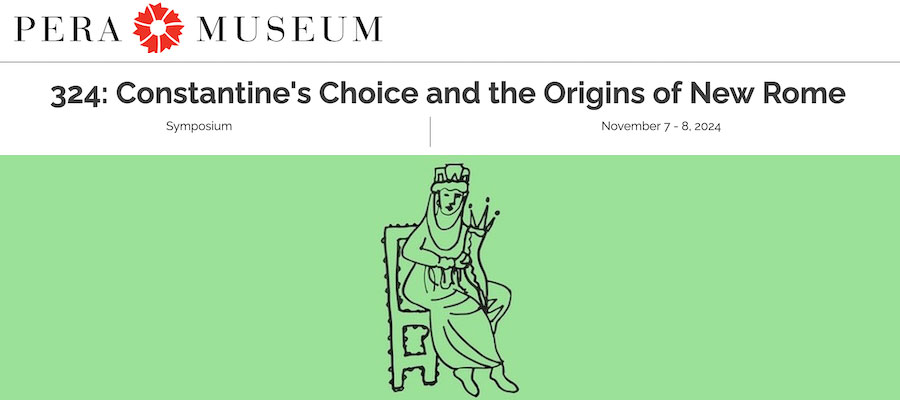324: Constantine's Choice and the Origins of New Rome, Pera Museum, November 7–8, 2024
On 8 November 324, Constantine the Great promoted his son Constantius II to the dignity of caesar and bestowed the rank of augusta on his mother, Helena, and his wife Fausta. Having proclaimed his dynastic intentions, he also upgraded the ancient city of Byzantion to the status of an imperial capital bearing his name.
To commemorate the 1700th anniversary of this pivotal event in world history, Istanbul Research Institute and Pera Museum host the international symposium 324: Constantine’s Choice and the Origins of New Rome. Organized by Brigitte Pitarakis and Paul Magdalino, this innovative symposium examines the foundation of Constantinople from a variety of interdisciplinary perspectives.
Why did Constantine choose the modest city of Byzantion for his bold urban project, and what did his plan involve? The symposium takes a fresh look at the textual and material evidence, including new archaeological data, to survey the layout of the new imperial capital and the ideology behind it. It also explores such related topics as the establishment of new cities under the Tetrarchy, the aesthetics of Roman cities, the ideological and cultural influence of Alexandria, Constantine’s relationship to Thessalonike, Nikomedeia, and Troy, including the latter’s role in the foundation legends connected to Constantine.
Recent advances in interdisciplinary research also allow for examination of New Rome’s development in light of fourth-century trade in the Eastern Mediterranean and the influx of wealth into Constantinople. Related topics include the provision of grain to the capital, the coin issues of Constantine and his sons, the production of imperial mints in the Marmara region, and the revelations of recovered amphorae and their contents. In addition, new horizons of examination have been opened by the inscriptions, coins, and other finds from the recent and earlier excavations in Istanbul and its environs, Küçükçekmece, İzmit (Nikomedeia), and İznik (Nikaea).
Constantine’s lifetime (ca. 272–337) defines the symposium’s time frame, but written and material evidence from earlier and later periods that contribute to contextualizing the primary focus is given appropriate weight, for example, his sons’ contributions to fulfilling of his bold program. The foundation of Constantinople will also be considered in relation to the dichotomy between his privileged relationship with Apollo and his adoption of Christianity, the other momentous development for which Constantine is famous.
Simultaneous English-Turkish translation will be provided.
